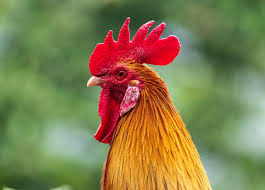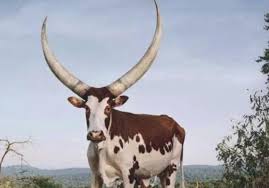Enrofloxacin Hydrochloride
Name:
Enrofloxacin Hydrochloride
Common Capacity:
- Water Soluble Powder: 100g/bag, 500g/bag, 1000g/bag (1kg/bag)
- Tablets: 30 tabs/bottle
- Liquid Solution (Oral Solution): 500ml/bottle, 1000ml/bottle
- Injection Solution: 50ml/bottle, 100ml/bottle
Common Concentration:
- Water Soluble Powder: 10%, 30%
- Tablets: (Specific tablet weight or active content is not specified in the data; typically common veterinary tablet strengths like 50mg, 100mg)
- Liquid Solution (Oral Solution): 10%, 20%
- Injection Solution: 10%, 20% (The database also shows a compound Enrofloxacin injection with 20%+4% )
Applicable Animals:
Enrofloxacin Hydrochloride is a fluoroquinolone antibiotic with broad-spectrum antibacterial activity, effective against Gram-negative bacteria, Gram-positive bacteria, and Mycoplasma. It exerts its bactericidal effect by inhibiting bacterial DNA replication. Due to its good tissue penetration and bioavailability, it is widely used for bacterial and mycoplasmal infections in various animals.
Applicable Animals in Global Animal Husbandry:
- Poultry (Chickens, Ducks, Geese): Primarily used for the treatment of Mycoplasma disease (chronic respiratory disease), E. coli disease, salmonellosis, pasteurellosis, staphylococcosis, and other respiratory, digestive, and urogenital system infections.
- Pigs: Primarily used for the treatment and prevention of digestive and respiratory diseases and other systemic infections caused by E. coli, Salmonella, Pasteurella, Streptococcus, Staphylococcus aureus, such as piglet yellow and white scours, porcine contagious pleuropneumonia, and streptococcosis.
- Cattle (Calves): Used for the treatment of bacterial respiratory diseases (e.g., pneumonia caused by Pasteurella), intestinal infections (E. coli diarrhea), and mastitis.
- Sheep: Used for the treatment of pneumonia and enteritis.
- Aquatic Animals (Fish, etc.): Used for the treatment of bacterial gill-rot disease, enteritis, erythrodermatitis (red-spot disease), and other bacterial diseases.
- Pets (Dogs, Cats): Primarily used for the treatment of skin infections, respiratory infections, urinary system infections, gastrointestinal infections, ear infections, and bone and joint infections. Tablets or injection solutions are commonly used clinically.
- Special Farming (e.g., Rabbits, Foxes, Minks): Can be used for bacterial and mycoplasmal infections in these animals.
Usage and Dosage:
The usage and dosage of Enrofloxacin Hydrochloride vary depending on the dosage form, animal species, and severity of the condition. Common usage and dosage:
Water Soluble Powder (Mixed in drinking water/feed):
- Poultry:
- Drinking Water: Add 50-100 mg of Enrofloxacin active ingredient per liter of drinking water, for 3-5 consecutive days. (e.g., for 10% powder, add 0.5-1g per liter of water).
- Feed: Add 50-100 mg of Enrofloxacin active ingredient per kg of feed, for 3-5 consecutive days. (e.g., for 10% powder, add 0.5-1g per kg of feed).
- Pigs:
- Drinking Water: Add 50-100 mg of Enrofloxacin active ingredient per liter of drinking water, for 3-5 consecutive days.
- Feed: Add 50-150 mg of Enrofloxacin active ingredient per kg of feed, for 3-5 consecutive days.
Tablets (Oral):
- Pets (Dogs, Cats): 5 mg per kg body weight, once or twice daily, for 5-10 consecutive days, or as directed by a veterinarian. 2
Liquid Solution (Oral, directly or mixed in drinking water):
- Poultry/Pigs: Refer to the dosage for water-soluble powder mixed in drinking water.
- Aquatic Animals: 10-20 mg of Enrofloxacin active ingredient per kg body weight, mixed with feed and administered orally, once daily for 5-7 days. (Or calculated based on water body concentration).
Injection Solution (Subcutaneous/Intramuscular):
- Pigs/Cattle/Sheep: 2.5-5 mg per kg body weight, once daily, for 3-5 consecutive days. For severe infections, the dose can be increased to 5-7.5 mg per kg body weight.
- Dogs/Cats: 5 mg per kg body weight, once daily, for 3-5 consecutive days.
Dosage by Growth Stage:
- Young Animals: During high incidence periods of digestive and respiratory infections, therapeutic doses can be used.
- Growing-Finishing Period: Used to control outbreaks of diseases like pneumonia and enteritis, or as a prophylactic medicine.
- Breeding Animals: Can be used to control postpartum infections and reproductive tract infections in breeding animals (e.g., sows).
Applicable Diseases and Symptoms:
Enrofloxacin Hydrochloride is mainly used for the treatment of infections caused by bacteria and Mycoplasma sensitive to Enrofloxacin:
- Respiratory System Infections:
- Poultry: Chronic respiratory disease, infectious coryza, airsacculitis, fowl cholera.
- Pigs: Porcine contagious pleuropneumonia, porcine mycoplasmal pneumonia, swine pasteurellosis.
- Cattle/Sheep: Pneumonia, bronchitis.
- Pets: Bronchitis, pneumonia.
- Digestive System Infections:
- Poultry: E. coli disease, salmonellosis.
- Pigs: Piglet yellow and white scours, edema disease, salmonellosis.
- Cattle/Sheep: Calf diarrhea, enteritis.
- Pets: Bacterial enteritis.
- Urinary and Reproductive System Infections:
- Mastitis, metritis, cystitis.
- Skin and Soft Tissue Infections:
- Traumatic infections, abscesses, dermatitis.
- Others:
- Septicemia, arthritis, and other systemic infections.
- Aquatic Animals: Gill-rot disease, enteritis, erythrodermatitis, vibriosis and other bacterial fish diseases.
Precautions:
- Withdrawal Period: Strict adherence to the product’s specified withdrawal period is necessary to avoid drug residues. Different animals and dosage forms may have different withdrawal periods.
- Young Animals: Young animals (especially young dogs) may be sensitive to fluoroquinolones; excessive or prolonged use may lead to cartilage lesions in joints. Use with caution or reduce the dose.
- Hepatic and Renal Impairment: Use with caution in animals with severe impaired hepatic and renal function; dose adjustment may be necessary.
- Gastrointestinal Discomfort: A small number of animals may experience gastrointestinal reactions, such as vomiting and diarrhea.
- Resistance: Prolonged or improper use may lead to the development of bacterial resistance. Use rationally under veterinary guidance.
- Drug Interactions:
- Should not be used concurrently with preparations containing divalent or trivalent metal ions (e.g., calcium, magnesium, aluminum, iron), as this may affect absorption.
- Concomitant use with non-steroidal anti-inflammatory drugs may increase the risk of convulsions.
- Concomitant use with theophylline may increase theophylline toxicity.
- Storage: Store sealed in a cool, dry place, out of reach of children, and away from direct sunlight.
Contraindications:
- Contraindicated in animals with a known hypersensitivity to fluoroquinolones.
- Contraindicated in young animals (especially growing puppies and kittens) with existing chondrodysplasia or joint diseases.
- Use with caution in pregnant and lactating animals or as directed by a veterinarian.
Post-Administration Care:
- Observe Animal Status: During and after medication, closely monitor the animal’s feed intake, mental state, body temperature, and fecal consistency to assess treatment efficacy and detect any adverse reactions.
- Fluid and Electrolyte Supplementation: Especially for animals with diarrhea or fever, timely supplementation of water and electrolytes helps in recovery.
- Improve Husbandry Management: Maintain a clean, hygienic, well-ventilated, and dry rearing environment to reduce stress and aid in animal recovery.
- Combined Medication: For cases of mixed infections or complex conditions, other medications can be combined under veterinary guidance.
- Strictly Enforce Withdrawal Period: Ensure that animal products (meat, eggs, milk) are marketed only after the specified withdrawal period.
Applicable Animals
Animal species suitable for this veterinary medication




